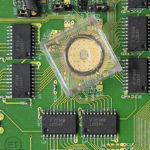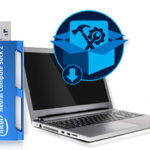 NVIDIA introduced NVIDIA Jetson AGX Orin, the world’s smallest, most powerful, and energy-efficient AI supercomputer for robotics, autonomous machines, medical devices, and other forms of embedded computing at the edge.
NVIDIA introduced NVIDIA Jetson AGX Orin, the world’s smallest, most powerful, and energy-efficient AI supercomputer for robotics, autonomous machines, medical devices, and other forms of embedded computing at the edge.
Built on the NVIDIA Ampere architecture, Jetson AGX Orin provides 6x the processing power and maintains form factor and pin compatibility with its predecessor, Jetson AGX Xavier. It delivers 200 trillion operations per second, similar to that of a GPU-enabled server but in a size that fits in the palm of your hand.
The new Jetson computer accelerates the full NVIDIA AI software stack, allowing developers to deploy the largest, most complex models needed to solve edge AI and robotics challenges in natural language understanding, 3D perception, multisensor fusion, and more.
Jetson AGX Orin features an NVIDIA Ampere architecture GPU and Arm Cortex-A78AE CPUs, along with next-generation deep learning and vision accelerators. High-speed interfaces, faster memory bandwidth, and multimodal sensor support provide the ability to feed multiple concurrent AI application pipelines.
Customers using the Jetson AGX Orin can leverage the NVIDIA CUDA-X accelerated computing stack, NVIDIA JetPack SDK, and the latest NVIDIA tools for application development and optimization, including cloud-native development workflows. Pretrained models from the NVIDIA NGC catalog are optimized and ready for fine-tuning with the NVIDIA TAO toolkit and customer datasets. This reduces time and cost for production-quality AI deployments, while cloud-native technologies allow seamless updates throughout a product’s lifetime.
The Jetson embedded computing partner ecosystem encompasses a broad range of services and products, including cameras and other multimodal sensors, carrier boards, hardware design services, AI and system software, developer tools, and custom software development.
For specific use cases, software frameworks include NVIDIA Isaac Sim on Omniverse for robotics, NVIDIA Clara Holoscan SDK for healthcare, and NVIDIA DRIVE for autonomous driving. The latest Isaac release includes significant support for the Robot Operating System (ROS) developer community. NVIDIA has also released the new Omniverse Replicator for synthetic data generation and Isaac GEMs, hardware-accelerated software packages that make it easier for ROS developers to build high-performance AI-enabled robots on the Jetson platform.
NVIDIA AGX Orin powers NVIDIA Clara Holoscan, a new computing platform for the healthcare industry that allows developers to build software-defined medical devices which run low-latency streaming applications on the edge. This processing power is needed for devices such as robotic surgery, endoscopy, and diagnostic imaging systems to process physics, imaging, and visualization and enable real-time AI-decision support for doctors. Clara Holoscan gives developers a flexible platform to create AI microservices that run low-latency streaming applications on devices while passing more complex tasks to the data center.
DRIVE AGX Orin, also powered by the NVIDIA Ampere architecture like Jetson AGX Orin, is the platform of choice for the transportation industry. It is the advanced processor behind the newly announced NVIDIA DRIVE Concierge and DRIVE Chauffeur — two AI platforms dedicated to redefining the passenger experience inside the car through AI assistants, and to powering safe, autonomous driving, respectively. Numerous global auto and truck makers, new energy vehicle startups, and shuttle companies are using its high-performance AI computes for their next generation of intelligent, software-defined mobility solutions.
The NVIDIA Jetson AGX Orin module and developer kit will be available in the first quarter of 2022. Register to be notified about availability, access detailed specifications, and download the white paper.






